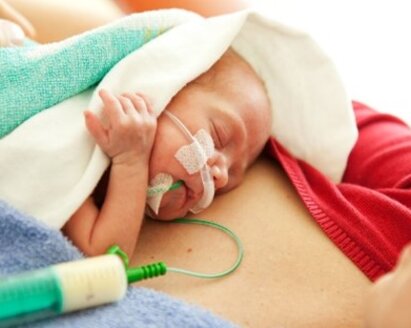1. Neville MC, Morton J. Physiology and endocrine changes underlying human lactogenesis II. J Nutr. 2001; 131(11):3005S-3008S.
2. Hoban R et al. Human milk biomarkers of secretory activation in breast pump-dependent mothers of premature infants. Breastfeed Med. 2018; 13(5):352–360.
3. Nommsen-Rivers LA et al. Delayed onset of lactogenesis among first-time mothers is related to maternal obesity and factors associated with ineffective breastfeeding. Am J Clin Nutr. 2010; 92(3):574–584.
4. Dewey KG et al. Risk factors for suboptimal infant breastfeeding behavior, delayed onset of lactation, and excess neonatal weight loss. Pediatrics. 2003; 112(3):607–619.
5. Boss M et al. Normal human lactation: Closing the gap. F1000Res. 2018; 7.
6. Meier PP et al. Breast pump suction patterns that mimic the human infant during breastfeeding: greater milk output in less time spent pumping for breast pump-dependent mothers with premature infants. J Perinatol. 2012; 32(2):103–110.
7. Hurst NM. Recognizing and treating delayed or failed lactogenesis II. J Midwifery Womens Health. 2007; 52(6):588–594.
8. Brownell E et al. Delayed onset lactogenesis II predicts the cessation of any or exclusive breastfeeding. J Pediatr. 2012; 161(4):608–614.
9. Meier PP et al. Which breast pump for which mother: An evidence-based approach to individualizing breast pump technology. J Perinatol. 2016; 36(7):493–499.
10. Parker LA et al. Indicators of Secretory Activation in Mothers of Preterm Very Low Birth Weight Infants. J Hum Lact. 2020:890334420980424.
11. Hobbs AJ et al. The impact of caesarean section on breastfeeding initiation, duration and difficulties in the first four months postpartum. BMC. Pregnancy. Childbirth. 2016; 16:90.
12. Poston L et al. Preconceptional and maternal obesity: epidemiology and health consequences. Lancet Diabetes Endocrinol. 2016; 4(12):1025–1036.
13. Grajeda R, Pérez-Escamilla R. Stress during labor and delivery is associated with delayed onset of lactation among urban Guatemalan women. J Nutr. 2002 [cited 2019 Jan 18]; 132(10):3055–3060.
14. Brown A, Jordan S. Impact of birth complications on breastfeeding duration: an internet survey. Journal of Advanced Nursing. 2013; 69(4):828–839.
15. Thompson JF et al. Women's breastfeeding experiences following a significant primary postpartum haemorrhage: A multicentre cohort study. Int Breastfeed J. 2010; 5:5.
16. Dewey KG. Maternal and fetal stress are associated with impaired lactogenesis in humans. J Nutr. 2001; 131(11):3012S-3015S.
17. Lau C. Breastfeeding Challenges and the Preterm Mother-Infant Dyad: A Conceptual Model. Breastfeed Med. 2018; 13(1):8–17.
18. Billett HH. Clinical Methods: The History, Physical, and Laboratory Examinations: Hemoglobin and Hematocrit. 3rd. Boston; 1990.
19. Hurst N et al. Providing mother's own milk in the context of the NICU: a paradoxical experience. J Hum Lact. 2013; 29(3):366–373.
20. UNICEF, WHO. Protecting, promoting and supporting breastfeeding: The baby-friendly hospital initiative for small, sick and preterm newborns. Geneva, New York: WHO; UNICEF; 2020. 42 p.
21. Spatz DL et al. Pump early, pump often: A continuous quality improvement project. J Perinat Educ. 2015; 24(3):160–170.
22. Torowicz DL et al. Human milk and breastfeeding outcomes in infants with congenital heart disease. Breastfeed Med. 2015; 10(1):31–37.
23. Post EDM et al. Milk production after preterm, late preterm and term delivery; effects of different breast pump suction patterns. J Perinatol. 2016; 36(1):47–51.





















